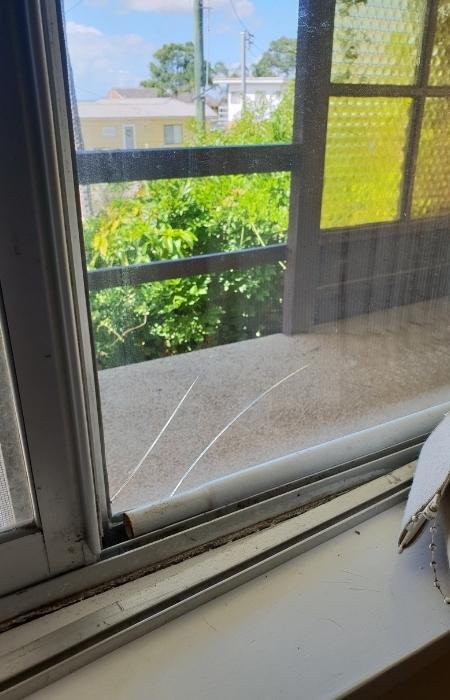Our number one tip when placing an offer on a property is to ensure the offer subject to finance and a pest and building report.
Making an offer ‘subject to’ gives you the ability to withdraw your offer if you have trouble securing the finance or if the pest and building report shows a major issue that affects your interest in the property or may reduce the property value.
If the property is clearly in need of renovation, it’s wise to request a cooling off period that allows you to obtain not only the pest and building report, but also confirm the bank valuation. The valuer inspecting the property may value the property lower than the price you have agreed to and you may need to contribute more savings to complete the purchase.
Why we recommend a pest and building report?
For many reasons, the first is that it will provide an insight into the quality of the property and helps protects you from making a bad purchase. It will also relieve some of the pressure, providing peace of mind on areas of the property you might have had concerns about.
Whilst there are many disclaimers associated with the final pest and building report, the inspector will be able to cast an expert eye over the property and flag any potential issues. By no means does a pest and building report provide a guarantee that there aren’t other issues not listed in the report, but it will flag areas that might need more investigation.
What can you expect to see in a pest and building report?
Essentially the report will detail anything that is visible to the eye. Very rarely will a pest and building inspector be able to access the under house or go crawling around in roof areas, but they will be able to detail defects that are an issue now or could cause problems later on. Such as;
Pest and building reports can help identify issues that may require full renovations.
Current and previous termite and other pest infestations
Structural damage
Cracked roofing tiles can lead to leaks
Missing and rusted fixings on roof
Corrosion and rust to gutters and downpipes
Balustrades which do not comply with safety standards (ie, too far apart or incorrect height).
Wood rot
Hot water systems without tempering valve fitted leading to risk of burns
Exposed electrical wires
Ceiling leaks or moisture spots on plasterboard
Leaking pipes or taps
Active termites or timber that has had termite damage
Vegetation against house walls create termite conducive conditions or moisture retention
Inadequate subfloor airflow
Now some of these issues sound scary and you’re right to be cautious, whilst others are relatively easily fixed and can open up a great opportunity for you to negotiate.
You can renegotiate the purchase price based on the pest and building report.
If you’ve identified issues with the property, you have a few options;
Continue with the purchase at the agreed price and fix the problems yourself
Continue with the purchase at the agree price and request the issues be fixed by the seller prior to settlement
Withdraw your offer and find another property
Renegotiate the purchase price to include the cost of repairing the issues identified in the report
Whether you negotiate the items to be repaired by the vendor to meet the current asking price or negotiate a lower price in order to rectify the items at your own cost the choice is yours.
Any maintenance you do on an investment property is tax deductible and often can be done with tenants being in the property as long as you let them know about the works upfront.
What is normal ‘wear and tear’?
Unless you’re buying a brand new property it’s likely your property will have what is called “Fair Wear and Tear”.
Fair wear and tear means the deterioration that occurs over time with the use of the premises even though the premises receive reasonable care and maintenance. It’s common for the property to deteriorate over time due to weather and use, particularly if they have been rented out.
For example;
Faded curtains, blinds that are slightly off-colour, stained, off the tracks or missing some clips
Furniture indentations and traffic marks to carpet
Scuffed up wooden floors
Faded, chipped or cracked paint
Worn kitchen bench
Loose hinges or handles on doors or windows and word sliding tracks
Cracks in the walls from movement
Cracked tiles or glass
Water stains on carpet from rain leaking through roof or bad plumbing
Grey, aged and frayed flyscreens
Missing light fitting covers or missing remote controllers
If the property is currently tenanted some of the wear and tear may be the responsibility of the tenant. You may like to request the entry report from the managing agent to see what elements the current tenant will be responsible for when their lease expires.
When the property is managed by Strata
Not all properties are strata managed, but if the one you are purchasing is it’s also a great idea to make your offer to a strata report. An easy way to check if a property is managed by strata is to look at the sale contract. If the property title reference starts with a DP (Deposited Plan) there is no strata. However, if the title reference starts with SP (Strata Plan) this indicates that some of the land is shared or comprises of common property, and there is a plan to manage and maintain those sections.
A warning about Community Titles; not all lenders will lend on a Community Title, so always check with your mortgage broker if you are considering buying a property that is under a Community Title. You may need to change to a lender which will support a home loan for a Community Title property.
If the property is managed under strata or a community title, it might be a good idea to get a strata report.
What can you expect to see in a Strata Report?
A copy of the strata plan
Strata by-laws
Account statements including information on the ‘capital works fund’ (previously known as a sinking fund).
10 year capital works plan
Details of the Strata Manager
Details of the Strata Committee
Annual General Meeting minutes
Committee meeting minutes
Copy of the Strata Building Insurance
Correspondence relating to insurance claims, disputes, owner request and tribunal attendances.
Strata Repairs and Maintenance
The good thing about a strata managed complex is that the owners’ corporation is responsible for taking care of repairs and maintenance of the common property.
This means that they will plan and pay for all major repairs to common property (this includes fixing defects).
This is a list of the items that are usually covered by the owners’ committee:
Roofs and gutters
Ceiling, unless the problem is with changes the owner has made
Boundary walls
Flooring in common property (such as hallways)
Lights in common property
Garage doors
Balconies and balcony doors
Windows and window locks
Plumbing in boundary walls and under the floor
Water damage coming from common property
If major repairs are needed, the owners’ corporation may have to meet to decide what to do. This may include a ‘special levy’ to cover the cost of the work.
It is important to note that Strata properties have Building Insurance which cover a lot of these costs and the administration team assigned to the property take care of contacting insurance about these repairs.
When purchasing a Duplex
If you are purchasing a common title property, it’s important to consider that the property will have what is called ‘shared insurance’ as opposed to strata.
With this arrangement the premium you pay can reflect the claims that your neighbour has made which has nothing to do with your side of the duplex.
It would be worthwhile having a discussion with the additional owners to have an understanding of what insurance claims have been made if any and how they would like to approach insurance claims if something were to arise in the future.



